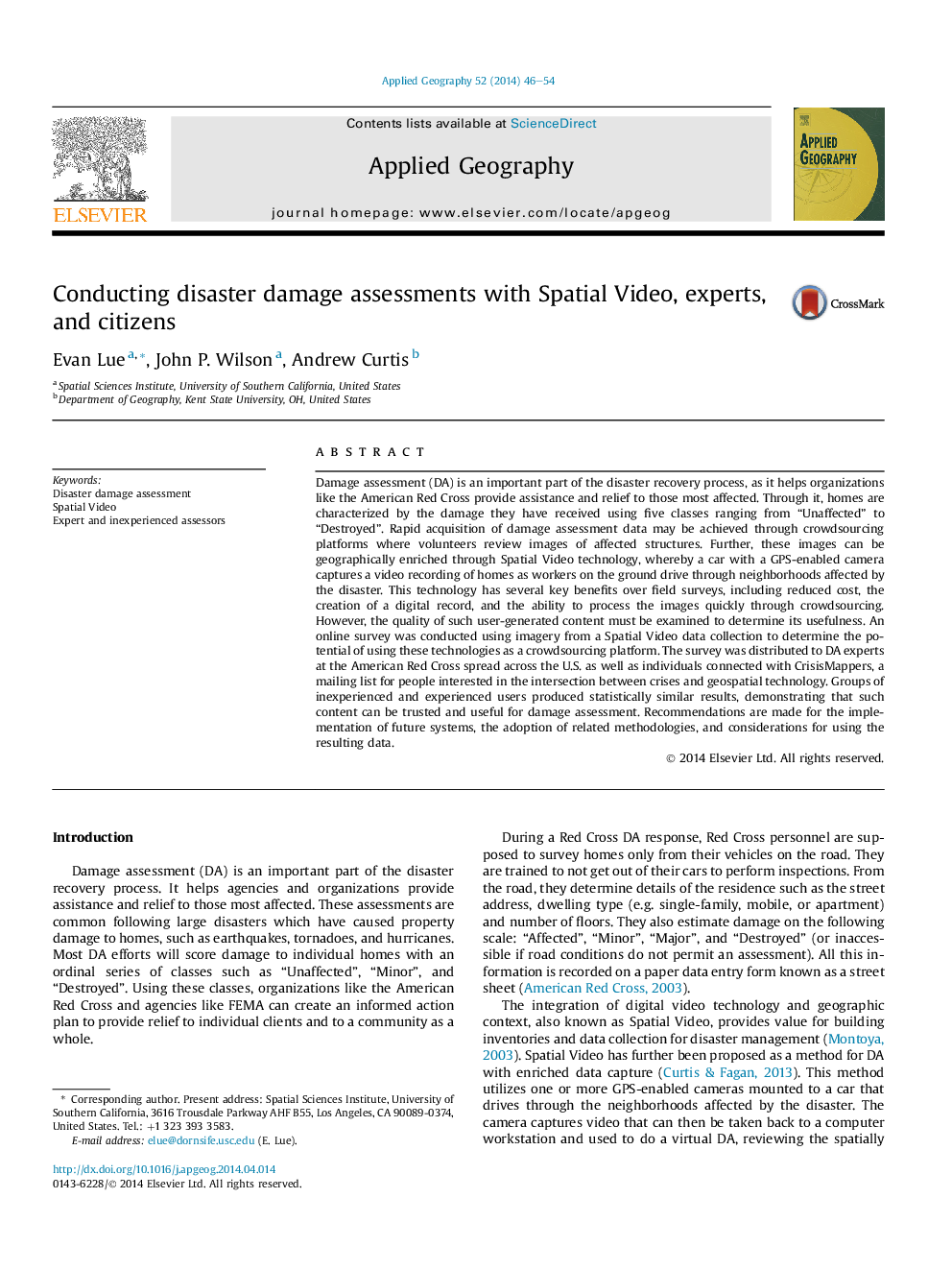| Article ID | Journal | Published Year | Pages | File Type |
|---|---|---|---|---|
| 6538750 | Applied Geography | 2014 | 9 Pages |
Abstract
Damage assessment (DA) is an important part of the disaster recovery process, as it helps organizations like the American Red Cross provide assistance and relief to those most affected. Through it, homes are characterized by the damage they have received using five classes ranging from “Unaffected” to “Destroyed”. Rapid acquisition of damage assessment data may be achieved through crowdsourcing platforms where volunteers review images of affected structures. Further, these images can be geographically enriched through Spatial Video technology, whereby a car with a GPS-enabled camera captures a video recording of homes as workers on the ground drive through neighborhoods affected by the disaster. This technology has several key benefits over field surveys, including reduced cost, the creation of a digital record, and the ability to process the images quickly through crowdsourcing. However, the quality of such user-generated content must be examined to determine its usefulness. An online survey was conducted using imagery from a Spatial Video data collection to determine the potential of using these technologies as a crowdsourcing platform. The survey was distributed to DA experts at the American Red Cross spread across the U.S. as well as individuals connected with CrisisMappers, a mailing list for people interested in the intersection between crises and geospatial technology. Groups of inexperienced and experienced users produced statistically similar results, demonstrating that such content can be trusted and useful for damage assessment. Recommendations are made for the implementation of future systems, the adoption of related methodologies, and considerations for using the resulting data.
Related Topics
Life Sciences
Agricultural and Biological Sciences
Forestry
Authors
Evan Lue, John P. Wilson, Andrew Curtis,
